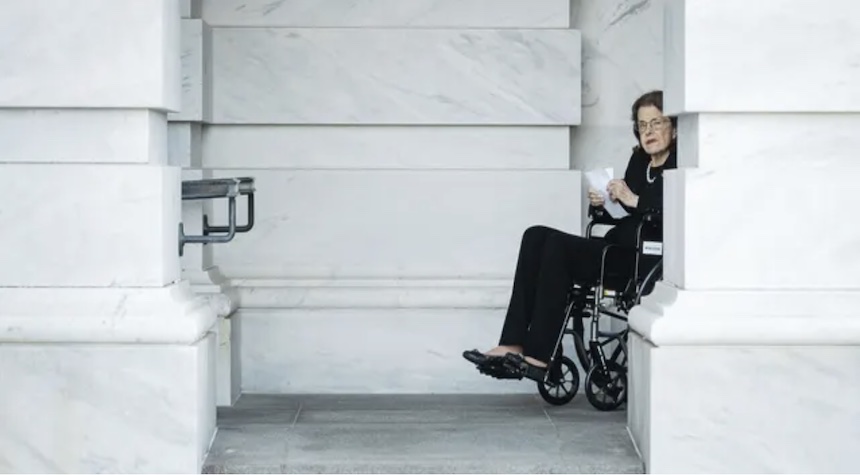The daughter of Sen. Dianne Feinstein (D-Calif.) has been granted power of attorney and is now handling the 90-year-old senator’s legal affairs.
Katherine Feinstein, aged 66, filed two lawsuits in her mother’s name to try to access the estate of Senator Feinstein’s late husband. As Democrats and Republicans debate whether Feinstein should be allowed to continue in office, the senator has decided to delegate the management of her affairs.
Katherine’s mother’s first suit is based on a California beach home owned by her late husband Richard Blum. The lawsuit claims that Feinstein wants to sell the home to raise money for her ongoing medical treatment.
The New York Times reports that the second lawsuit is challenging two other trustees of Blum’s estate, Michael Klein, who has been a lawyer for Blum since his early days, and Marc Scholvinck – a Blum business partner.

The lawsuit claims the two have refused to give Feinstein Blum’s proceeds of his life insurance, despite Feinstein’s claim that she requires the money to pay medical bills. It also notes Blum’s “intention to support his wife after his death.”
Steven Braccini is the attorney for Klein and Scholvnick. He has rejected this claim. According to him, Blum’s Estate has never refused Feinstein any money.
Braccini said to the Times that “My clients are confused by this filing.” “Richard Blum’s trust never denied any disbursement, even for medical expenses to Senator Feinstein.”

The office of Feinstein did not respond immediately to a comment request regarding Katherine’s need to handle her legal affairs.
Adam Russell, Feinstein’s spokesman, refused to comment on the matter in a Times statement, stating that it was “a private legal issue”. Senator Feinstein’s office will not comment.

In recent weeks, as the number of worrying incidents has increased, Feinstein’s suitability for office has been scrutinized. A hot mic captured the senator looking confused last week during a routine Senate Committee proceeding. She began reading her prepared remarks, instead of saying “aye”, during a vote by roll call.


